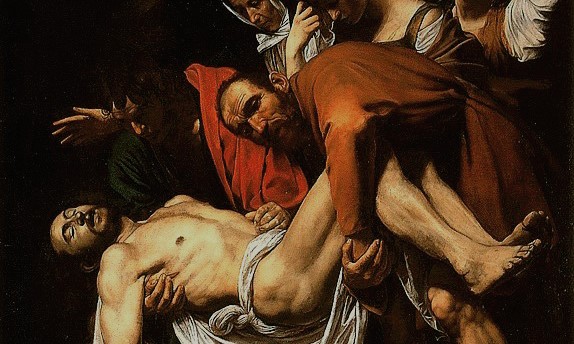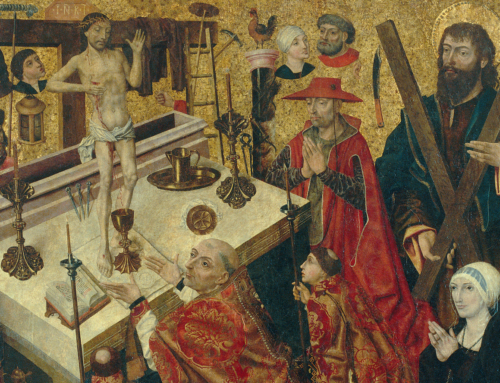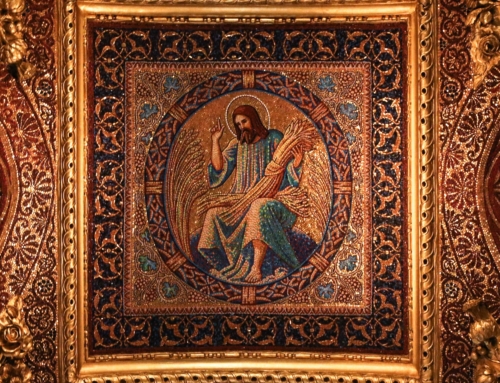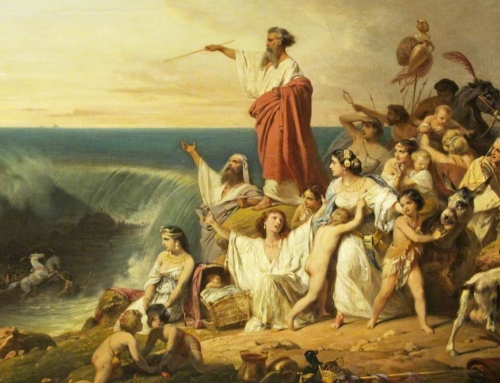Catechumens, those who have yet to receive baptism, but desire to be joined to Christ, prepare to receive the sacraments for the first time through prayer and study. Saint Augustine, a catechumen himself for much of his life, compares Nicodemus to a catechumen because he came to Jesus and made a confession of faith saying, “Rabbi, we know that you are a teacher come from God,” but Jesus still tells him, “You must be born from above” (John 3:7 cf-Tractate 11 on John). Although Nicodemus did not understand Jesus’s teachings and his own need for rebirth, Jesus did not castigate him.
Rather, as Jesus spoke with Nicodemus, the Divine Teacher taught a teacher of Israel, the Redeemer purified his redeemed, and God showed love to his creature. Jesus was preparing this man of the Pharisees to be born from above, despite his initial lack of understanding. This and subsequent encounters formed Nicodemus to come to Christ’s aide: when he both defended Jesus to the Sanhedrin, asking, “Does our Law condemn a person before it first hears him and finds out what he is doing” (John 7:51), and after the death of Jesus, he also “took the body of Jesus [with Joseph of Arimathea] and bound it with spices, according to the Jewish burial custom”(John 19:40).
Although the gospel of John only recounts one encounter between Jesus and Nicodemus in chapter three, through a close reading of the text, St. Augustine comes to the conclusion that this was not the only encounter. Reflecting upon John 19:40, which recounts Nicodemus’ role in burying the body of Jesus, Augustine claims that Nicodemus returned to Jesus again and again. Why did Nicodemus return to Jesus? Nicodemus had a certain hunger for new life in Christ which although he did not realize it, the Spirit placed in him. For those adults preparing to be entrusted to Jesus in baptism and confirmation, they can look to Nicodemus as a model, since he was brought to a full conversion throughout the gospel. This full conversion is ultimately what happens in the life of a catechumen. However, perhaps Nicodemus can be a model for all of us.
In these days of shelter in place, Catholics have a profound hunger for Christ in the Eucharist due to their inability to attend Mass. Sunday after Sunday, throughout the Christian world, the faithful are not able to approach the altar for Holy Communion. Although Christ is not feeding us with his body and blood in the Holy Eucharist, he has not left us orphans (John 14:18). Rather, he has assured us of his presence saying, “I am with you always”(Matt 28:28). Therefore this time away from Jesus in the Blessed Sacrament is not a new catechumenate but rather it is a time to remember that we have been “born from above”(John 3:7) on the day of our baptism. The Catechism of the Catholic Church recognizes these graces chiefly as the theological virtues and the gifts of the Holy Spirit (CCC 1266). These gifts of God’s grace become more deeply rooted as we live out of our baptisms and confirmations in a more concrete way this Pentecost.
However there are still many things which can be learned from the catechumenate and from Nicodemus. Just as the catechumen earnestly prepares for his baptism, we are called to an earnest preparation for our next holy communion, whenever that may be. However, now as people born from above, let us not only do so as strangers but let us turn to the Trinity who dwells within in all the baptized. As the Catechism says, “Baptism not only purifies from all sins, but also makes the neophyte “a new creature,” an adopted son of God, who has become a “partaker of the divine nature,” member of Christ and co-heir with him, and a temple of the Holy Spirit.” (CCC 1265). Let us all be like first communicants again, but this time more eager and more prepared. Let us longingly wait to receive Our Lord in the Holy Eucharist but let us also remember his presence with us right now. So that when the quarantine ends, we may approach him not as a stranger but may we “remain in [Christ’s] love”(John 15:15), so that we may hear from him “I call you friends.”
✠
Image: Caravaggio, La Deposizione di Cristo







